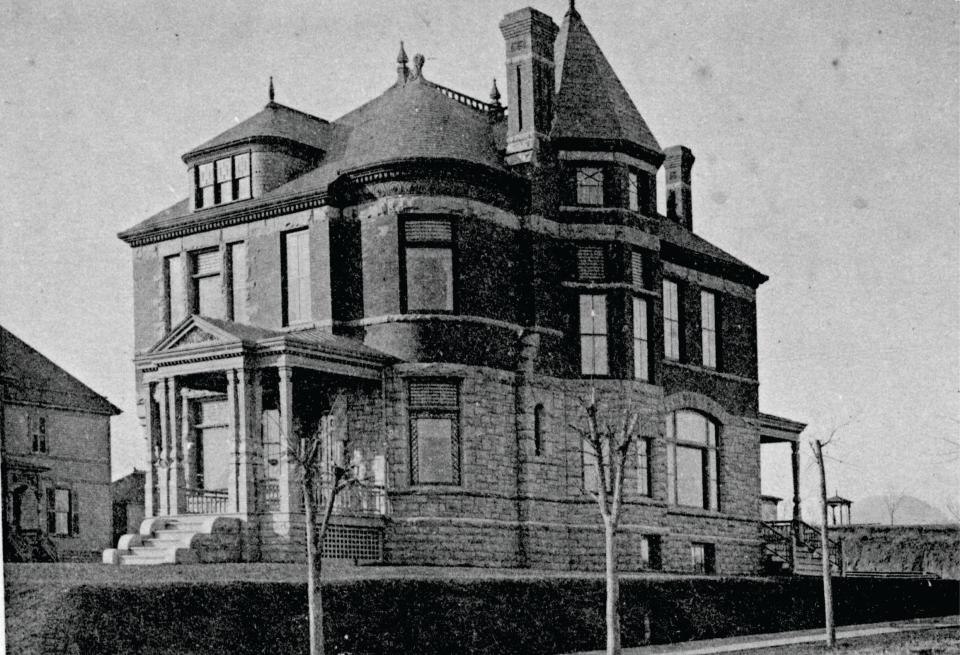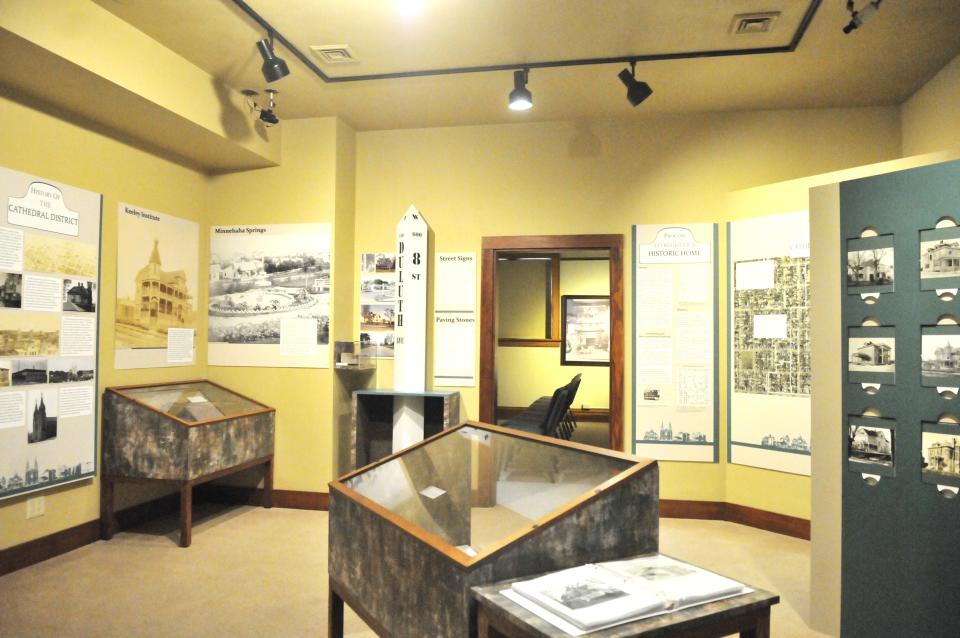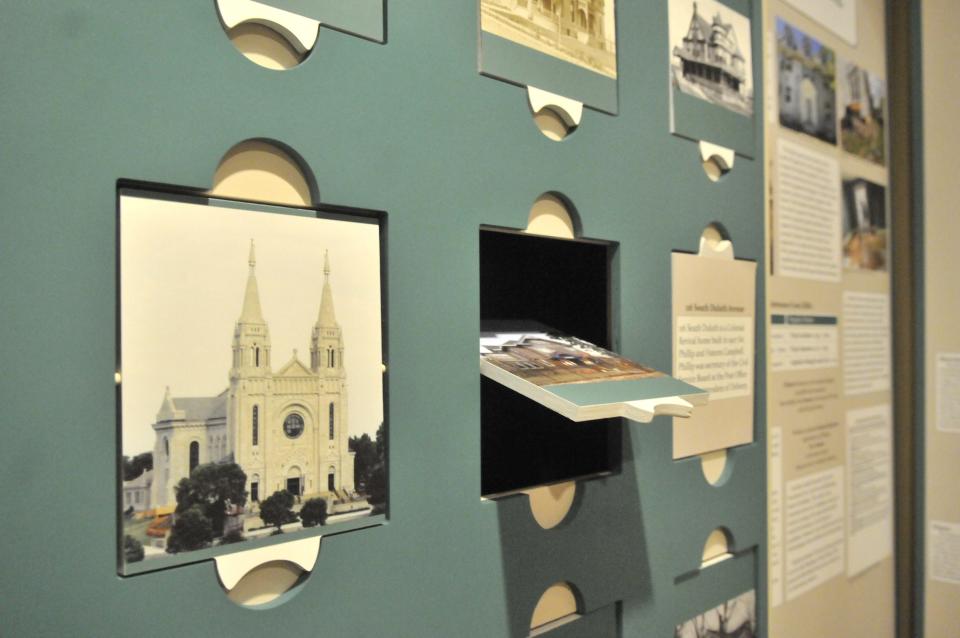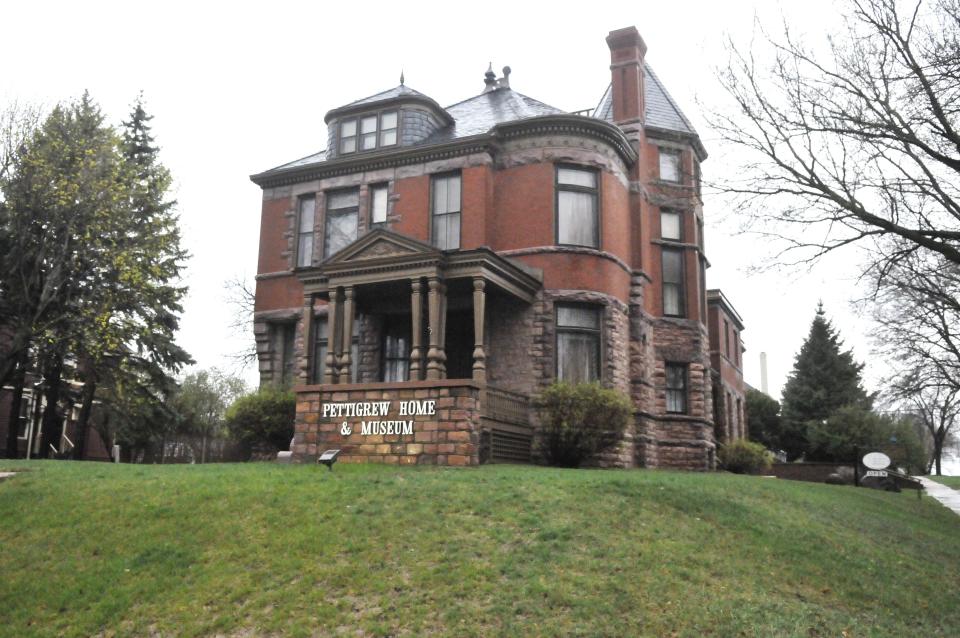Sioux Falls' historic Cathedral District is looking back on 50 years of recognition
One of the oldest and most renowned places in the city along the Big Sioux River is the Cathedral District, the first historic district in not just Sioux Falls but in South Dakota.
The neighborhood has been on the National Register of Historic Places since 1974, making this year its 50th anniversary.

Today, the Pettigrew Home & Museum at 131 North Duluth Avenue portrays how it would have looked during the late 1800s and early 1900s.

The museum opened an exhibit earlier this month for the public to learn more about the homes and people who resided in the Cathedral District, as residents continue to preserve the heritage of those who lived there and helped build the city of Sioux Falls to what it is today.

“What's great about our neighborhood is maintaining the history of bringing it into the future so their legacies aren't forgotten,” said Lura Roti, the former Board of Historic Preservation member.
Roti serves on the State Historical Society Board of Trustees and has been an active Cathedral District resident for the last 20 years. She played a vital role in the district’s expansion of 30 homes last year, her home being part of that expansion.
On a nearly 100-foot hill overlooking the boutiques, restaurants, local pubs and condos of downtown Sioux Falls, the historic Cathedral District is steeped in heritage that helped make Sioux Falls what it is today.

The Cathedral District was built over healing waters using native rock
The area was originally dubbed the Sioux Falls Historic District but was then renamed in 2011 after the St. Joseph Cathedral was built in 1919. This was one of Sioux Falls’ largest construction projects, costing nearly $400,000. It is now one of the most notable structures in the city’s skyline.
Those who made their homes in the Cathedral District during the early 1870s were among the first to introduce trees to the open prairie landscape. Those same and now mature trees line the neighborhood streets today.
More: Looking Back: St. Joseph Cathedral built on history
The district's history is further enriched by Minnehaha Springs near 4th Street and Duluth Avenue. This underground spring originally attracted Sioux Indians for its therapeutic waters and later served as a site for manufacturing soda water, mineral water and cider. These waters also provided a serene spa, and were eventually turned into a lush garden with a water fountain. The springs were capped in the late 1940s and are now the site of Hawthorne Elementary classrooms.
Another natural element utilized throughout the neighborhood was native quartzite, found on select curbs and home foundations to this day. This element was mined locally and used to pave the streets in a cobblestone fashion, which can still be found on 6th Street and Duluth Avenue, before descending to Minnesota Avenue. The alley connecting 6th and 7th streets between Duluth and Summit avenues is also renowned throughout the area.
Probably the most notable aspects of this area are its historically relevant grand and upscale houses that include details such as turrets, towers and wraparound porches. Once homes to some of Sioux Falls’ elite, the mostly Victorian-era architectural styles include the Queen Anne, Colonial Revival and Craftsman, according to the Pettigrew Home & Museum.
Sioux Falls' founding fathers and mothers
Many of the Cathedral District's earlier residents included Sioux Falls figures who aided the city's growth and development.
“These were names that you would recognize from the community today … our founding fathers and mothers,” said Kevin Gansz, curator of education for Siouxland Heritage Museums.
Gansz said many of these residents owned or built downtown businesses, so it was convenient for them to live in an area close to downtown.
More: Canopy by Hilton Sioux Falls Downtown hotel to open this fall
“Having an address on Duluth Avenue was often a sign that you had made it here,” Gansz said.
One such resident was William Corson, who built the infamous Cataract Hotel in 1871, originally on 9th Street and Phillips Avenue downtown. The Cataract was the county’s first and finest hotel. It was later razed in 1974 and relocated to Duluth Avenue, six blocks from its original location. Now a part of the Cathedral District, the structure is used for apartments.
Richard Franklin Pettigrew represented the U.S. Congress in Washington D.C., according to the Pettigrew Home & Museum website. He purchased what is now the Pettigrew Home & Museum in 1911. Pettigrew relentlessly helped promote and develop the city of Sioux Falls, including introducing its five railroads, fostering numerous local businesses and later becoming South Dakota’s first full-time senator.

Preserving the past is crucial and in fact, required in the Cathedral District given its stature on the National Register of Historic Places and Sioux Falls Board of Historic Preservation. This sometimes can be challenged, however.
The Queen Anne style home located at 435 N. Spring Avenue has stood for more than 130 years and is a prominent piece of history in that it was Sioux Falls’ first mayor’s home. In 2017, a Sioux Falls developer, Advantage Investments, purchased the property, intending to demolish it and build updated housing in its place.
When the neighbors heard of this, they set a plan in action by working with the South Dakota Board of Historic Preservation which voted unanimously in 2018 to preserve the home, despite its dilapidated condition.
The home has since been purchased and is in the process of being restored.
The Cathedral District spans multiple generations, all of whom have at least one thing in common - their historic homes, Roti said.
More: Wings mural pops up in Cathedral District, invites people to neighborhood
Roti compares living in the Cathedral District to a small town with its tight-knit neighborhood.
“Everybody knows us and there's just a sense of belonging. It's wonderful,” Roti said with a smile.
Roti experienced this first-hand when her husband was struck by a drunk driver on Halloween night. She said the neighborhood was there for her and her husband as he recovered by starting a meal train, helping with housework, monetary donations and keeping up with the yard work, a crucial aspect in the historic district.
Neighborhood residents also spend many joyous occasions together gathering for barbecues, hosting themed parties and taking part in the Neighborhood Watch Group. Residents walk their dogs and stop to visit with a neighbor sitting on the front porch to have a glass of wine.
Learn more about the Cathedral District’s rich history and beauty by viewing the exhibit at the Pettigrew Home & Museum, open seven days a week from noon to 5 p.m.
This article originally appeared on Sioux Falls Argus Leader: One of South Dakota's most renowned locations celebrates anniversary

